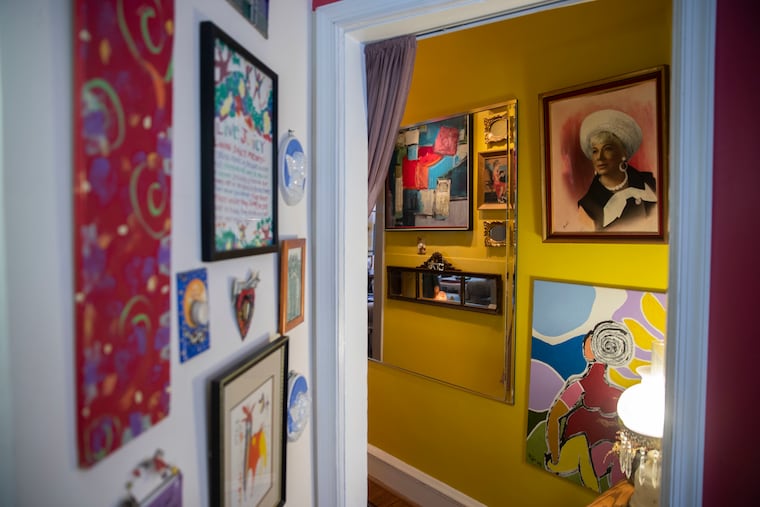Decorate with mirrors to bring in light or make your home feel bigger
Nothing beats a mirror for refreshing a space or adding sparkle, which is why mirrors of all shapes and sizes are a staple of decorating.

Nothing beats a mirror for refreshing a space or adding sparkle, which is why mirrors of all shapes and sizes are a staple of decorating. They can be a focal point of a room, increase the glamour factor, or be strategically placed to make a space feel larger, brighter or more modern.
“I am always team mirror,” says New York-based designer Mikel Welch, who has appeared on the design show Trading Spaces. “In an urban dwelling with smaller spaces, we are always into mirrors to give the optical illusion of making things look larger.”
Washington-area designer Marika Meyer agrees: “Changing out a mirror can be a fun way to mix up a space.”
But many people aren’t sure where to start. Here are tips from Welch, Meyer and other design pros about where to look for mirrors, where to place them, and how to maximize their effect.
Getting started
Focus on the shape and the frame when shopping. Popular frame materials include metal, wood, plaster and leather. Then find a retailer that fits your budget. The designers suggested CB2, RH, Serena & Lily, Crate & Barrel, West Elm and Wayfair as good sources.
“A great budget-friendly mirror source is HomeGoods,” Meyer says. “I have a round one in our office that I bought there years ago for $20. World Market is another great option.”
New mirrors can be big-ticket, budget-busting items. Designers recommend flea markets, thrift shops and local auctions as sources for vintage mirrors. Keep an eye out for old frames with character that can easily be fitted at a local glass shop to create a statement piece.
Meyer picked up a frame for $10 at the Big Flea Market in Chantilly, Va., and spray-painted it white, then had a mirror cut to fit. "It hangs in my powder room and looks great against the metallic wallpaper," she says. Go to frame shops, Meyer says, because they often have discarded frames they might be willing to give away.
Chicago designer Tom Stringer likes 1stDibs for vintage mirrors. He also recommends attending estate sales, where, he says, you can find high-quality pieces at good prices. "Chunky vintage picture frames are ideal for reuse as mirror frames," he says.
Where to hang them
When it comes to placement, Stringer says he likes to position mirrors where they will magnify the light in a room. “They bounce light into dark corners,” he says. “I often use them as illusionary windows.”
Designer Nick Olsen agrees. “It’s a cliché, but it’s true. The best selfie lighting in my upstate New York house is the spot where I hung a mirror between two windows.” Put a mirror opposite a window, he says, to grab the light and make the room brighter and to create a greater sense of space.
Be mindful of how high you hang the mirror. Meyer’s go-to formula is four to eight inches above the furniture or architectural feature below it. “I usually start at four inches and then move upward,” Meyer says. If your ceilings are particularly high, you can hang it higher. But the mirror should relate to what’s below it, she says. “I generally do not go further than eight inches off that surface, so we do not create an awkward naked gap between the mirror and the furniture or mantel.”
Over a fireplace. If you’re lucky enough to have a fireplace, don’t just nail up any old mirror you have lying around. Nobody is looking into a mirror that high up, Meyer says; it’s a focal point of a major room. She suggests looking for “a frame that feels artful or a shape that is unique.” She likes the look of round mirrors over a fireplace, “since it breaks up all of the horizontal elements,” but says rectangles also can work.
Entryways and hallways. Stringer recommends a mirror in the entryway. “Everyone wants to check their face before they answer the door, especially now that we are wearing masks.”
Welch says people often neglect hallways — both upstairs and down. “I am a fan of looking at slender spaces that don’t get as much love,” Stringer says. He suggests placing a mirror above an entryway bench. He likes the look of Wayfair’s round beveled accent mirror by Kelly Clarkson Home ($137.99, wayfair.com). “It makes the entry look larger,” Welch says.
The dining room. Positioning mirrors opposite windows in a dining room will allow them to reflect natural light. A mirror centered over a credenza or buffet can also catch the glow from lighting fixtures and candles at a dinner party, adding to the ambience.
On a gallery wall. Mirrors in interesting frames or picture frames are great mix-ins for gallery walls. “Don’t be afraid to step outside of pictures,” Welch says. “Try using 70% artwork and 30% mirrors on the wall.” He advises mixing it up and not putting mirrors next to one another. Cut craft paper into the sizes of the art and mirrors, then tape them to the wall, he says. “This will allow you to play with various configurations before putting numerous holes on the wall.”
Beside the bed. Meyer’s bedroom in her 1940s house includes a smart designer trick. She bought an old frame, added a mirror to it and hung it behind the lamp next to her bed, which is near a window. “It adds light and fills out a negative space without adding too much detail,” she says.